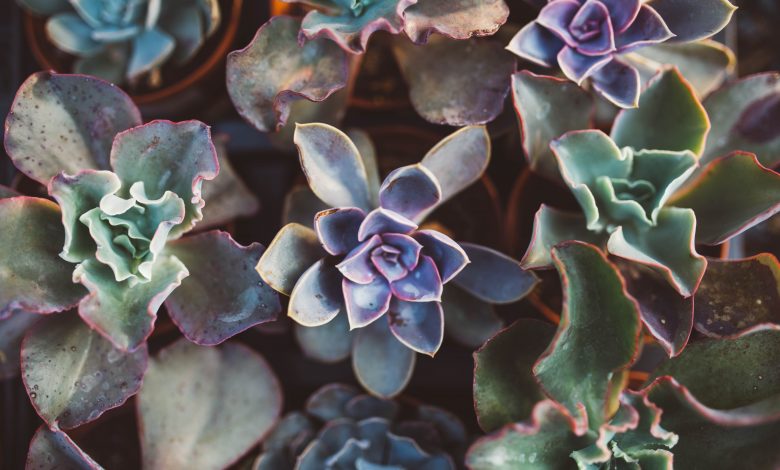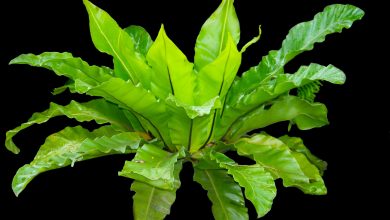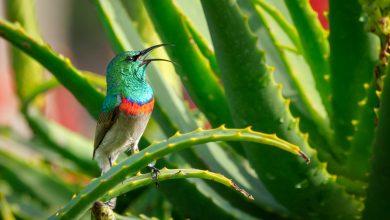How to Put Together a Succulent Garden

Succulents can be the perfect addition to an already existing garden, or they can be a beautiful garden all on their own. Putting together a succulent garden is an artful craft. While the art of building a succulent garden can likely never be perfected, there’s also no wrong way of doing it. Below we’ll go over everything to consider when putting together a succulent garden.
What is a Succulent?
Plants known as succulents have thick, fleshy petals that are adept at retaining water in arid climates. A common form of a succulent that many people use as sunburn defense is aloe vera.
There is a wide variety of succulent plants that range from small vine-like drapery to large prickly cacti. Some horticulturalists will not include cactus plants among the succulent family, but cactus plants can be the perfect accent pieces for your succulent garden.
Start with a Decorative Pot
The fun of putting together a succulent garden starts with picking out the perfect pot. Although succulents can be planted directly into the ground, they require both a different watering regimen and different soil from many other plants. Oftentimes, succulent gardens are put together and arranged in large flowerpots. The size of the pot, of course, will depend on how many plants you want to arrange. A good size to start with is a pot that is ten inches wide and four inches deep.
The only rule when picking out a pot for succulents is that it must have drainage holes. Unglazed ceramic pots tend to drain exceptionally well, as do terracotta style pots.
Create Your Arrangement
Most pots will feature a larger, main plant in the middle, with smaller accent pieces arranged around it. The cactus variety of succulents can provide a verticality to the composition that contrasts well with the sweeping broad petals of your main plant. The needles of the cactus also contrast well and add texture to the supple petals of the succulents.
As you fill your pot, don’t be shy about adding more soil as you go if some of your original soil has settled. You can also consider creating a larger mound of soil in the center of the pot to give one plant a more prominent position above the rest.
Don’t be afraid to adjust your arrangement. There is no right or wrong when creating a succulent garden. Succulents are simple to replant, so if you finish your arrangement and decide it needs a little tweaking, go for it.
Watering
Err on the side of less watering, as these plants are meant to live in dry, arid environments and are exceptional at retaining water. To help your plants grow faster and stay healthier, you can add a few drops of cactus fertilizer to the water you give your plants. It can also be helpful to use a large syringe to water your succulents, as you can easily judge where the water is going and how much is coming out.
Types of Succulents to Consider
When planting your succulents, there are two ways of going about it. You can plant rooted succulents, or you can cut off the roots and just plant the stems. Your plants will grow either way you chose to do it. The reason for cutting the stems is simply to get the correct fit in a crowded flowerpot. With a cutting, you want to make sure that the node, where the leaves attach to the stem, is surrounded by soil. And for rooted plants, just make sure that the soil is covering the root.
Below are six succulents you should seriously consider for your garden:

String of Pearls
Scientific name: Senecio rowleyanus
The string of pearls succulent is a perfect accent piece for a potted succulent garden. Like a gracefully draped vine of green pearls, the string of pearls can delicately hang off of your pot to add a brand-new element of texture and scope to your garden. The cascading string of pearls is perfect as a finishing touch.
How to Care for String of Pearls
The string of pearls grows quickly and can thrive both indoors and outdoors.
- Sun: String of pearls will get burnt if left in an area that gets full sun. If outdoors, put them in a shaded area that gets bright indirect light. If indoors, place them near a window that gets a decent amount of natural light.
- Soil: Like all succulents, the string of pearls needs soil that can drain well. Potting mix will work well for succulents. Or you can add peat moss to your soil to create your own well-draining mix.
- Water: You need to be extra careful not to overwater string of pearls. If indoors, water them once every two weeks. If outdoors, natural rainwater should be enough.

Blue Rose
Scientific name: Echeveria imbricate
The blue rose gets its name from the clusters of rosettes, which form when the plant matures. This attractive succulent is one of the most common echeverias due to its distinctive powder blue petals with pointed tips. The powder on the leaves helps to protect the plant from sun damage. The blue rose plant does not tolerate temperatures below 30 degrees Fahrenheit, so if you live in a colder region, bring your plant indoors during the winter.
The blue rose will grow up to eight inches tall and six inches wide.
How to Care for Blue Rose
- Sun: Blue rose plants will thrive in partial sun and partial shade.
- Soil: Well-draining soil is necessary. Succulent potting mix will work best.
- Water: The blue rose requires a typical succulent watering schedule. Soak the soil and do not water again until the soil is completely dry.

Perle von Nurnberg
Scientific name: Echeveria Perle von Nurnberg
The Perle von Nurnberg features a delightful shade of color that combines purple, blue, and green into one. It is an easy succulent to find and grows well outdoors. Unlike many other succulents, though, this plant is not well-suited to growing indoors. In full sun, the Perle von Nurnberg will produce pink flowers with yellow centers in the summertime.
Perle von Nurnberg will grow up to five inches tall and six inches wide.
How to Care for Perle von Nurnberg
- Sun: This plant grows best with partial sun to full sun.
- Soil: Well-draining soil is required.
- Water: Water every ten to 14 days if there hasn’t been any rain in the area.

Lace Aloe
Scientific name: Aristaloe aristate
Lace aloe gets its name from the small white bumps that decorate its green leaves. Unlike many other aloe plants, the lace aloe is a fast grower, which makes it an excellent propagator if you want to expand your garden. To propagate, gently take off one of the leaves by twisting it, and let it sit for a day. Then plant in well-draining soil. You should soon be able to tell if your propagation was successful.
In the summer, lace aloe will bloom with pink flowers that hummingbirds find especially intoxicating. This plant is also cold hardy and can survive down to zero degrees Fahrenheit.
The lace aloe will grow up to eight inches tall and up to six inches wide.
How to Care for Lace Aloe
- Sun: They need not too much sun, but not too much shade. You can grow lace aloe indoors with enough sunlight.
- Soil: Use potting soil specifically made for cactus plants. Drainage is essential for lace aloe.
- Water: As with most succulents, water the soil deeply, but do not water again until the soil is completely dry.

Echeveria Chihuahuanesis
Scientific name: Echevaria chihuahuaensis
A smaller version of the Echeveria colorata, the chihuahuaensis features a soft green interior color and is highlighted by pink pointed tips on its leaves. Its rosette grows up to four inches wide, and the pink color on the tips of the leaves will grow gently down the sides and back of the plant as it matures. This Echeveria plant can survive down to 25 degrees Fahrenheit.
Echeveria chihuahuaenis is easy to propagate, so take advantage of pruning its leaves if you want to expand your garden. Dead leaves on the bottom of the plant should be removed to keep away pests.
How to Care for Echeveria chihuahuaensis
- Sun: This plant will grow in both sun and shade.
- Soil: Well-draining soil is required.
- Water: Only water during dry periods. Plants can start to rot if water is left in the leaves.

Zebra Plant
Scientific name: Haworthia attenuata
Haworthia makes for an excellent house plant with its slender and distinctively striped leaves growing in bunches. It can also be used well to add a new element of color and height to a growing succulent garden. The white stripes are actually strings of small white bumps that provide additional interest. This plant is easy to grow and generally won’t grow taller than five inches.
Haworthia attenuate can survive to as low as 30 degrees Fahrenheit.
How to Care for Zebra Plant
- Sun: The Haworthia species prefers bright light.
- Soil: Use a well-draining soil.
- Water: Use the soak and dry method that is typical for succulents. In the winter, water once a month.



